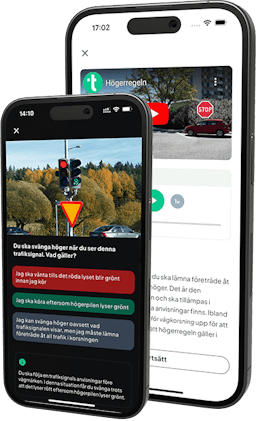Range of Visibility
You will have a shorter range of visibility when driving in the dark compared to driving in daylight. The distance from which you notice pedestrians will depend on how they are dressed and which lights you have on. The following table gives you some examples of the distance at which you are likely to notice pedestrians in different conditions:
With dipped headlights
Dressed in dark colours: 20 - 30 metres
Dressed in bright colours: 60 metres
With reflectors: 125 metres
With main beam headlights
Dressed in dark colours: 150 metres
Dressed in bright colours: 300 metres
With reflectors: 400 - 450 metres
As you can see from the table, it is easiest to see pedestrians when they are wearing reflectors. It is therefore important to wear reflectors if you go out walking in the dark; otherwise you run the risk that motorists will not notice you until it is too late.
If you are dazzled by a bright light, your range of visibility can be reduced to almost zero metres. When you have been dazzled, it can take some time before your ability to see in the dark recovers. You should therefore take care not to look directly into bright lights (such as oncoming cars) when driving in the dark.

Main Beam Headlights
In order to make sure you have good visibility when driving in the dark, you should use your main beam headlights as often as possible. However, there are certain times when you are not permitted to use your main beam headlights. You must not use your main beam headlights if there is already sufficient lighting or you risk dazzling other drivers.
Oncoming Traffic in the Dark
Oncoming traffic on straight roads
- Keep your main beam headlights on for as long as possible. Turn them off just before the light reaches the oncoming vehicle or when you are at risk of dazzling the other driver.
- Reduce your speed as your range of visibility will be lower with dipped headlights.
- Keep your gaze fixed up ahead, on the right edge of the road. This will prevent you from being overly dazzled by the oncoming vehicle and will make it easier for you to notice pedestrians. In order to avoid collision with pedestrians, make sure that you do not drive too closely to the right edge of the road.
- Switch back to main beam headlights as soon as you begin to pass the other car. This way, you will have your main beam headlights back on as early as possible, without dazzling the other driver.

Oncoming vehicles at bends
You should switch to dipped headlights when you are approaching a bend. This will allow you to see oncoming vehicles sooner. You will see the vehicle’s light before you see the vehicle itself.
When you meet oncoming traffic on a bend that turns to the left, it is ok to keep your main beam headlights on for longer. Because the headlight shines straight ahead, towards the edge of the road, the light will not hit oncoming traffic quite as soon.
Oncoming traffic at the crest of a hill
You should also change to dipped headlights when approaching the crest of a hill in order to see if there is any oncoming traffic. If you meet a goods vehicle, you must dim your headlights as soon as you see the vehicle’s position lights.
Overtaking in the Dark
It is important to keep in mind that it can be more difficult to judge the distance from oncoming vehicles in the dark. You should therefore be extra careful and take care to overtake without risk.
Proceed as follows:
- Use dipped headlights when you are driving behind another vehicle and plan on overtaking; this is to make sure you do not dazzle the driver in front through their rear-view mirror.
- When you begin the overtake and your light is shining on the side of the vehicle, you can switch to main beam headlights again.
- You should have your main beam headlights on during the overtake, so long as you are not at risk of dazzling any oncoming vehicles.

Get Better Visibility in the Dark
Headlights
Make sure that your headlight lenses are not dirty. If one of your headlights is broken, be sure to replace it as soon as possible.
Windscreen and wiper blades
Check your windscreen and have it replaced if it is worn or scratched. It is important that your wiper blades are in good condition so that they can keep your windscreen clean while driving. Regularly wipe the inside of your windscreen.
Vision
You should get your vision tested by an optician on a regular basis. Vision often deteriorates gradually, which means it can be difficult to detect changes yourself.


